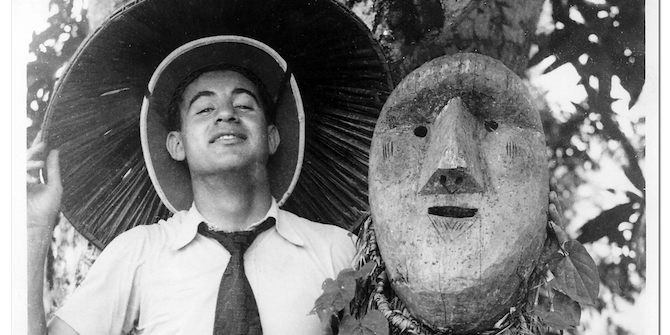by Gustavo de Siqueira

In his critical pedagogy, Paulo Freire advocated for a model that, once grounded on the experience of pupils, could actively engage them in the learning process. His method is based off generating themes and words present in their vocabulary. According to him, the role of the teacher is to facilitate the learning process as the proprietary of structured knowledge. However, all participants are assumed to have relevant knowledge that contributes to the overall learning experience. Urban designers, I claim, should become more like the teachers in Freire’s method. Especially in rapidly developing urban areas, the designer should act as a facilitator of the spatial development process.
In the residential areas of Muscat and neighbouring countries, neglected public and open spaces are ubiquitous. Due to rapid, suburban, car-oriented development patterns, authorities are not able to provide basic services. Usually, the spaces in front of each villa are paved and arranged individually by their residents or left abandoned. Since each neighbour does these small interventions separately, barriers such as levels, fences, or low walls interrupt the pathways. Unplanned parking occupying the sidewalks force pedestrians to walk on the street.
The Safe and Active mobility is a pilot implementation of a small-scale urban regeneration concept for residential neighbourhoods in Oman, developed within the Where Oman Walks framework (the WOW project). WOWs objective is to introduce pedestrian cores in the residential areas, through a participatory approach. Why WOW? In Oman, low levels of physical activity are associated with the environmental qualities of the neighbourhoods and have severe consequences on health outcomes. WOW aims to re-design the built environment, resetting priorities, and promoting an active lifestyle. Since mosques are ‘the most walked to’ places for daily prayers, and groceries are usually located at small commercial infrastructures close by, we decided to limit the study to a walking distance from there.
The WOW method consists of developing a preliminary environmental assessment and co-designing a follow-up workshop with residents. In the first phase, the research team conducts surveys on the perceived walkability attributes in conjunction with physical maps. They aim to identify the main barriers to pedestrian activity in place. The results of the preliminary studies reveal the main challenges to be addressed during the co-designing workshops. The latter are divided into three sessions. The first is an informative presentation of the objectives of the project. In the second session, cue cards of three types are distributed among the participants. Blue cards stand for ‘good things from the neighbourhood’, red cards for the ‘bad things’, and black cards for ‘interesting things’ they wished to have in the neighbourhood. Filling the cards before the negotiation part helps the participants reflect on their environment and set priorities. In the third session, participants use a city game format to negotiate spatial changes to overcome physical barriers to pedestrian activities in their neighbourhood.
We decided to locate our first project In the community in Al Hail north, a traditional district of Muscat with an established neighbourhood structure. Unlike some new residential developments, in Al Hail vacant plots are not very dominant, making interactions with the local community less challenging. The workshops were conducted with gender separation to allow participants to speak up without constraints. After overlaying the results of the city game from both male and female workshops, we found a high degree of agreement on most points raised. The exception was to the space in front of the mosque’s main entrance. While men asked for a gathering space there, women stated that they feel uncomfortable crossing that area, suggesting that the area is male-dominated. Although women rarely pray in the mosques, it is crucial to provide comfortable access to the shops close to them.
Additionally, the cue cards demonstrated that safety issues are perceived differently amongst men and women; while women are concerned about being exposed to the male gaze, men focus on traffic safety (‘speeding cars’, ‘no speed-humps’) and other infrastructure issues (such as the lack of a drainage system, and the presence of litter). Also, women considered the lack of parks and other gathering spots for children as the most prominent problem. Overall, while the mosque and the spaces surrounding it are fit for the male gatherings, their female counterparts are completely absent.
We collected funds to implement the project in Al Hail as a pilot. The design applies traffic calming strategies to increase perceived safety and, consequently, induce more physical activity. We reorganised random parking and proposed a big crosswalk that works as a speed breaker in front of the mosque. It will work as a shared space that provides women with direct access to groceries and laundry services without crossing the gathering area close to the mosque entrance.
The Making of Safe and Active Residential Areas in an Inclusive Way
In terms of spatial development, the areas surrounding the local mosques in Muscat work for WOW similarly to the generating words in Freire’s method. They are a structuring element of the neighbourhood spatial ‘vocabulary’. Small improvements made in these areas – the results of our intervention suggest – have the potential to create impactful changes in the whole neighbourhood. Therefore, the WOW project sets a precedent on how to regenerate the neglected public spaces in the residential areas of Muscat, in order to turn them into attractive and active places.
However, focusing all efforts on redesigning such spaces to make them more pedestrian friendly does not guarantee that female residents will be encouraged to participate more in public life. Only a more universal design approach with the integration of services accessible for women and children might help create an inclusive neighbourhood.
Also, the implementation of the project poses major challenges. Despite all efforts to involve all residents in the area (for example, talks in the mosque, door-to-door invitations, social media adverts), and even with incredible levels of engagement throughout the workshops, some neighbours started vehemently opposing the project’s progress during its construction works. Precisely due to the exclusively top-down standard approaches for planning in place that fail to provide minimum standards of urbanisation, we found that the residents have a strong demand to feel engaged in the spatial development of the public and open spaces in their neighbourhoods. This is especially the case when they invest their own resources to unofficially pave the areas in front of their houses. They perceive these spaces as private property.
We argue that, besides the negative impact on levels of physical activity and sense of personal safety, the fragmented nature of the urban spaces in these neighbourhoods precludes the possibility for bottom-up initiatives in the community to thrive.
The WOW project is one opportunity for neighbours to start discussions on issues in their communities collectively, to spark a self-organised movement that can help cover the demands for development and community initiatives.
This piece is part of a series on urban development and the role of road infrastructure in forging socio-spatial conditions, based on contributions from participants in a closed LSE Roundtable in September 2021. Read the introduction here, and see other pieces below.
In this series:
- (Re)thinking Streets in Low Urban Densities by Alexandra Gomes, Apostolos Kyriazis, Clémence Montagne & Peter Schwinger
- The Future Development of the City of Kuwait: Kuwait’s Urban Form as a Case Study by Roberto Fabbri
- Pedestrian Dynamism Index: An Approach to Increasing Permeability between the Peripheral and Central City of Guadalajara by Monica Castañeda, Ricardo Fernandez and Roberto Robles-Arana
- Studying Abroad in Stockholm: Incentivising Young Adults Towards Greener Mobility by Ningning Xie
- Plan with a Purpose: A Systems Approach in Transportation Development and Liveable Cities by Lizao Chen
- Metropolisation and Spatial Segregation in Gulf Cities: The Cases of Abu Dhabi and Dubai by Moiz Uddin
- Rethinking Streets in North Obhur, Jeddah, Kingdom of Saudi Arabia by Alok Tiwari
- Safe and Active Mobility: A Prototype for the Re-Pedestrianisation of Residential Neighbourhoods in Oman by Gustavo de Siqueira
- Urbanisation and Physical Activity: Addressing the Needs of Omani Women by Ruth Mabry and Huda Al Siyabi







Hello Gustavo
We would be pleased to have in Fau Ufrj. Beautiful work. Wellington done!
Ana Amora